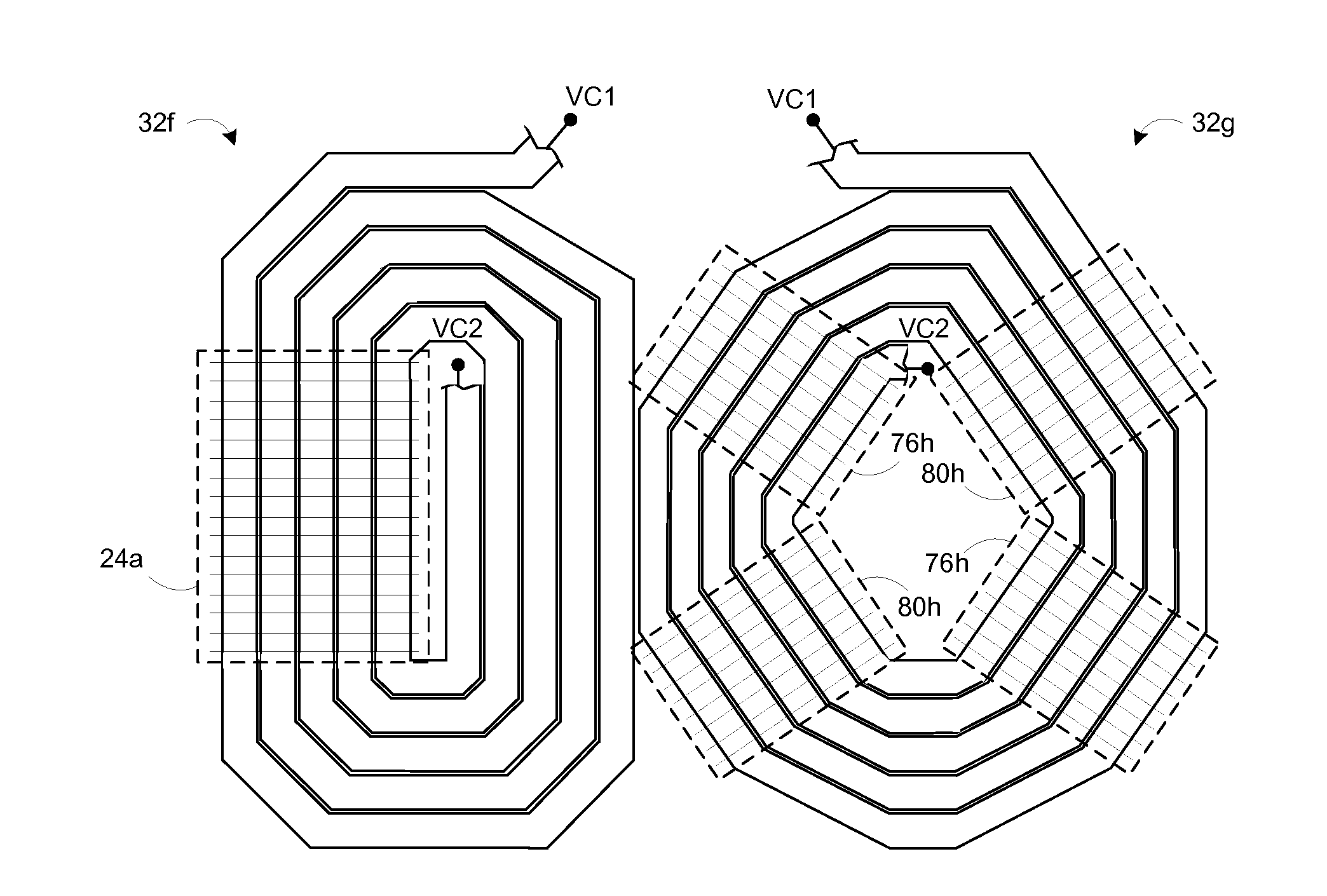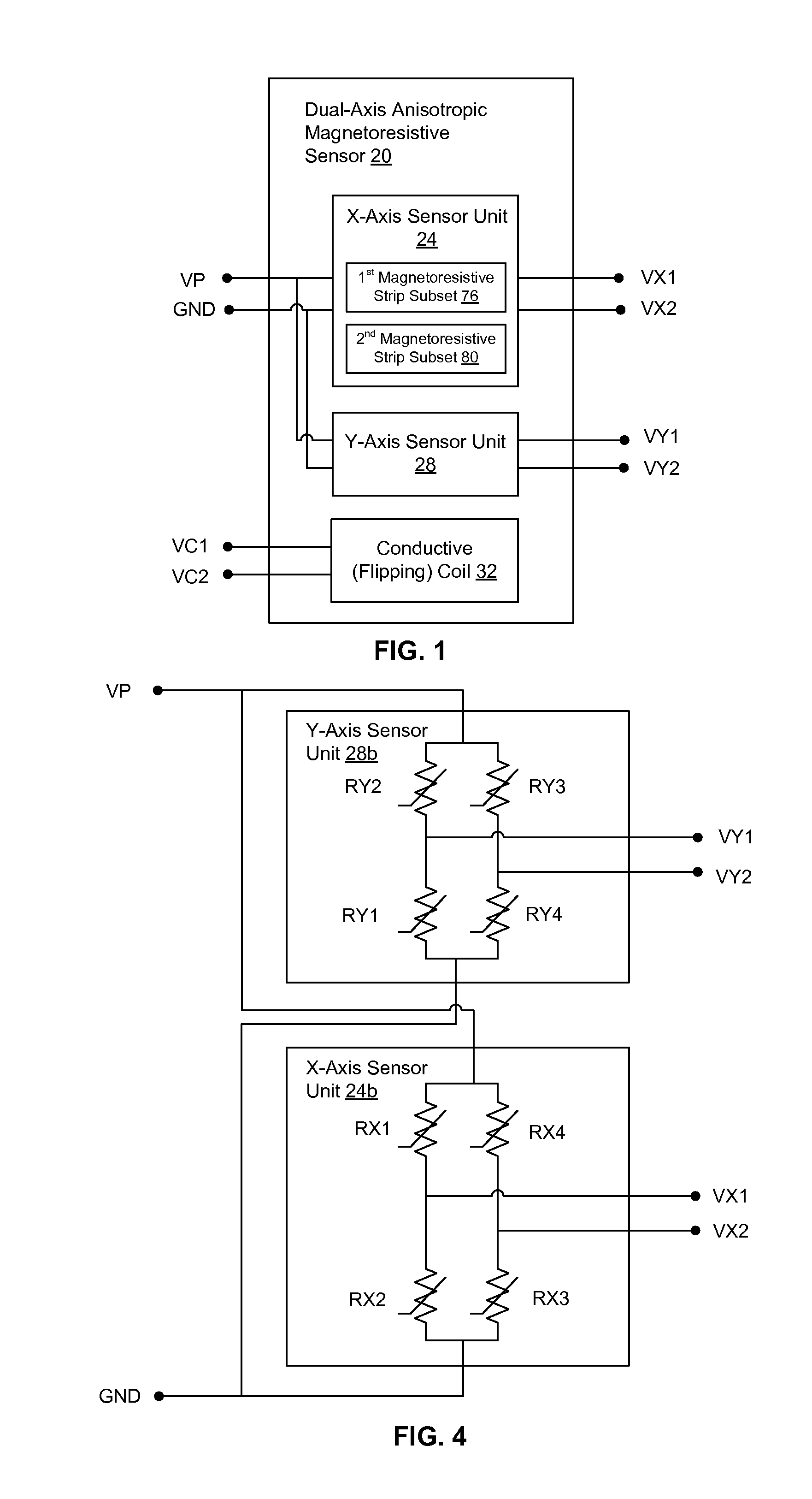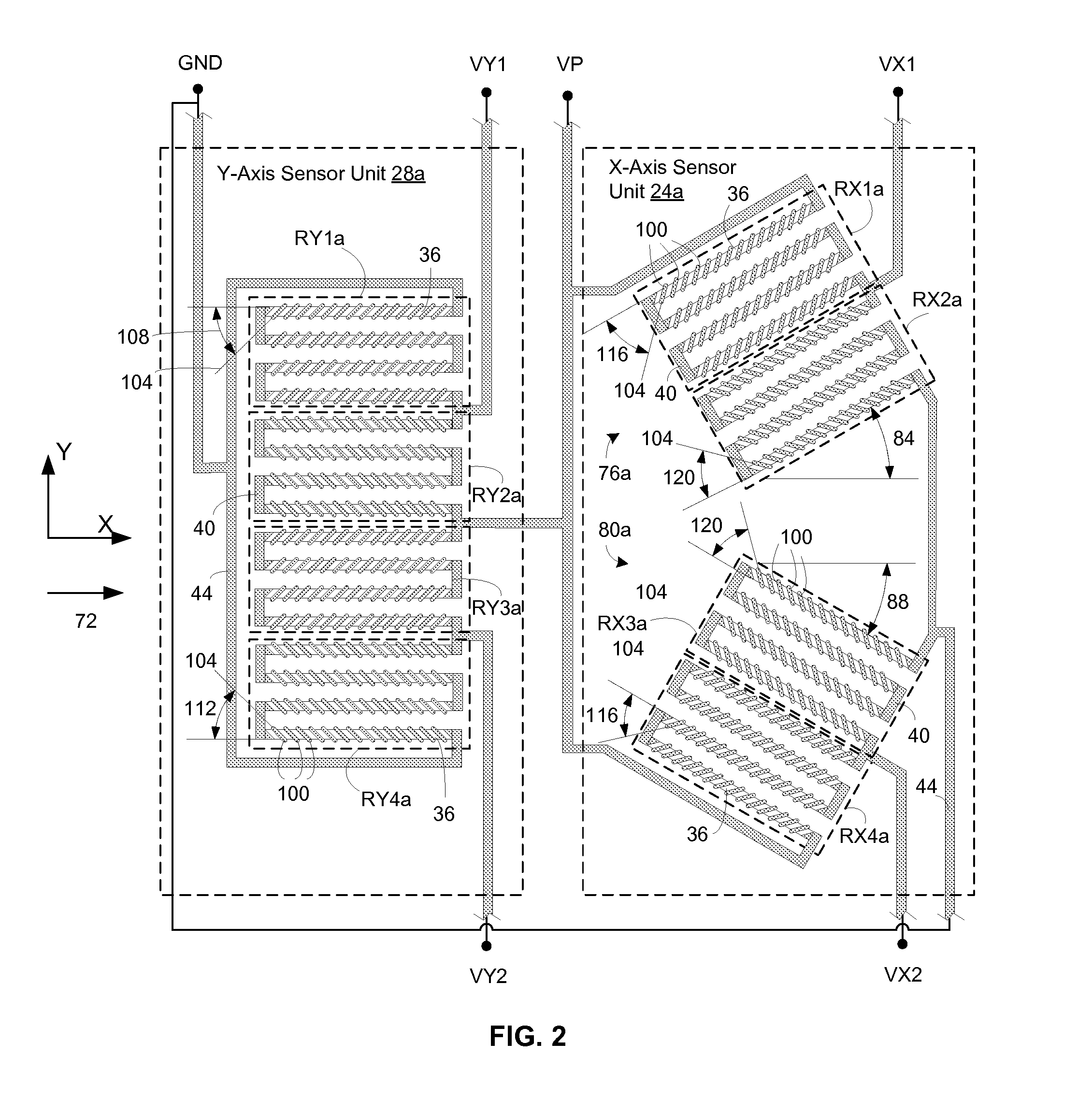Dual-axis anisotropic magnetoresistive sensors
a technology of anisotropic magnetoresistive sensors and anisotropic magnetoresistive materials, which is applied in the direction of magnetic field magnitude/direction, measurement devices, instruments, etc., can solve the problems of high cost, high technology difficulty, and inability to manufacture an anisotropic magnetoresistive material of multiple technological anisotropy axes, and the design and operation of multi-axis bridge-type amr sensors are likely to be difficult. , the magn
- Summary
- Abstract
- Description
- Claims
- Application Information
AI Technical Summary
Benefits of technology
Problems solved by technology
Method used
Image
Examples
Embodiment Construction
[0030]A dual-axis AMR sensor can include an x-axis sensor unit and a y-axis sensor unit. The sensor can be formed as a single integrated circuit having only a single layer, or vertically continuous set of layers, of anisotropic magnetoresistive material exhibiting only a single technological anisotropy axis. The x-axis and y-axis sensor units can have a primary sensitivity to, and produce an output signal as a function of, x-axis and y-axis ambient magnetic field components, respectively. By contrast, the x-axis and y-axis sensor units can have a reduced or substantially zero sensitivity to, and produce a reduced or substantially zero output signal as a function of, y-axis and x-axis ambient magnetic field components, respectively.
[0031]The x-axis and y-axis sensor units of the dual-axis AMR sensor each can include a resistor bridge formed by a plurality of magnetoresistors, each magnetoresistor composed of one or more strips of the magnetoresistive material connected in series by c...
PUM
 Login to View More
Login to View More Abstract
Description
Claims
Application Information
 Login to View More
Login to View More - R&D
- Intellectual Property
- Life Sciences
- Materials
- Tech Scout
- Unparalleled Data Quality
- Higher Quality Content
- 60% Fewer Hallucinations
Browse by: Latest US Patents, China's latest patents, Technical Efficacy Thesaurus, Application Domain, Technology Topic, Popular Technical Reports.
© 2025 PatSnap. All rights reserved.Legal|Privacy policy|Modern Slavery Act Transparency Statement|Sitemap|About US| Contact US: help@patsnap.com



